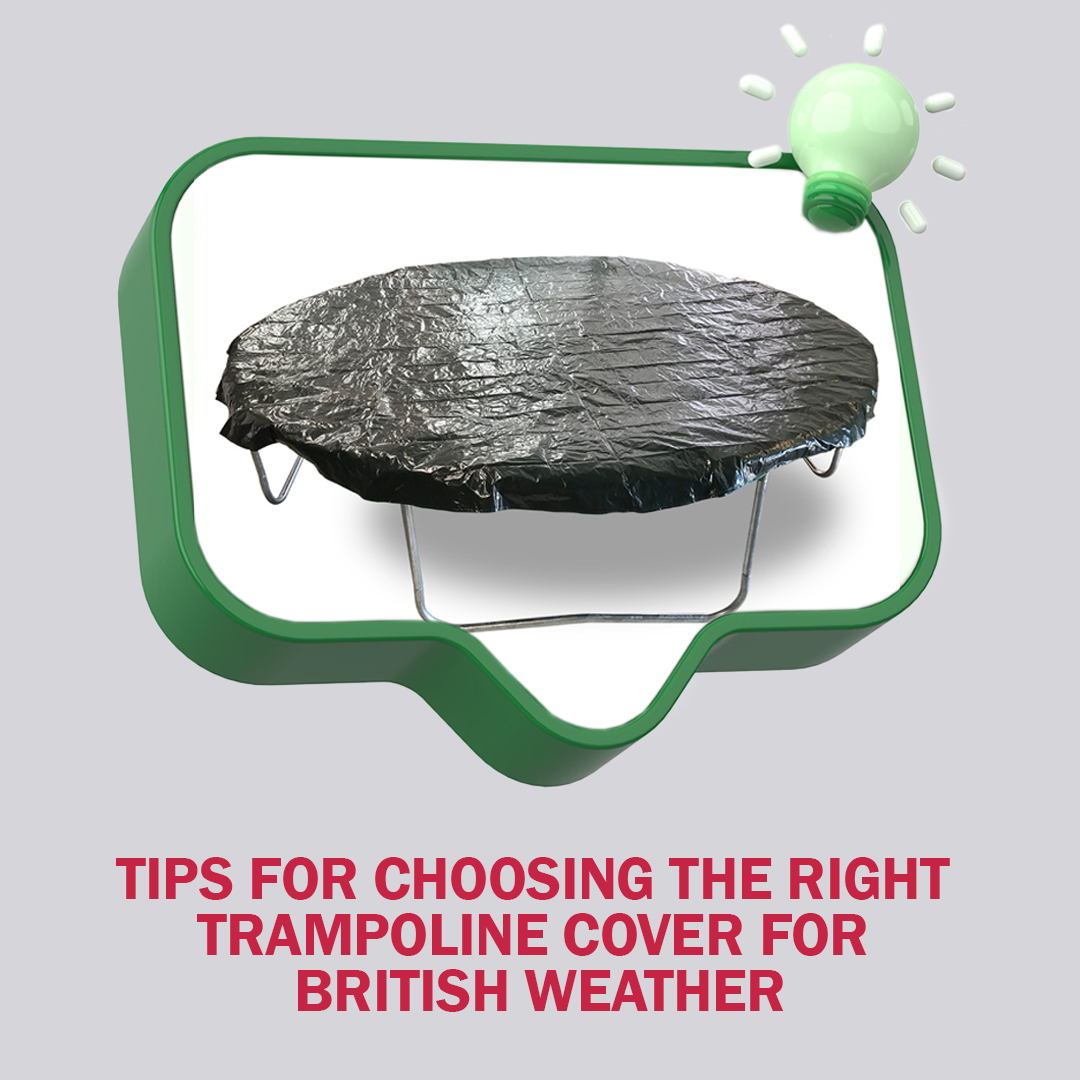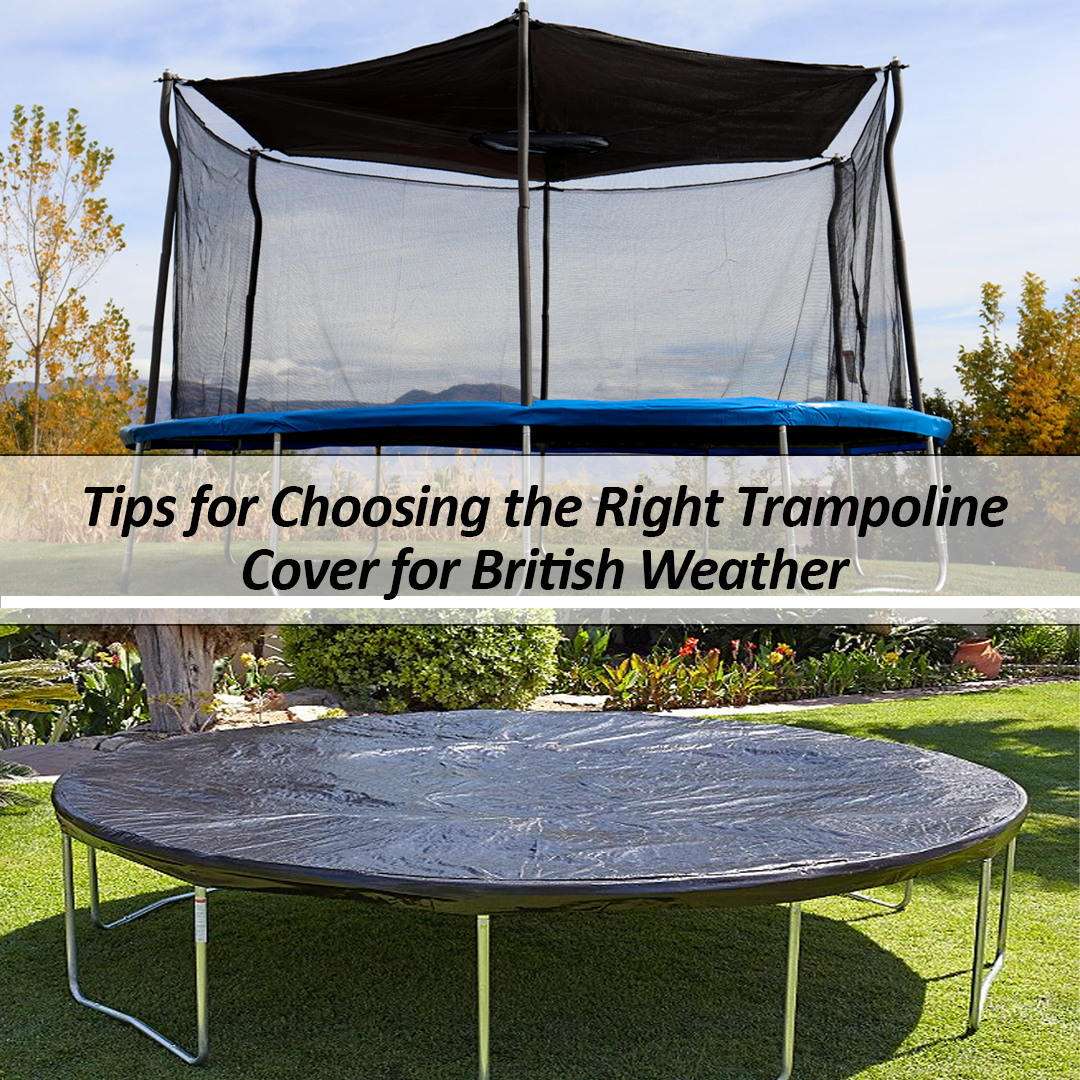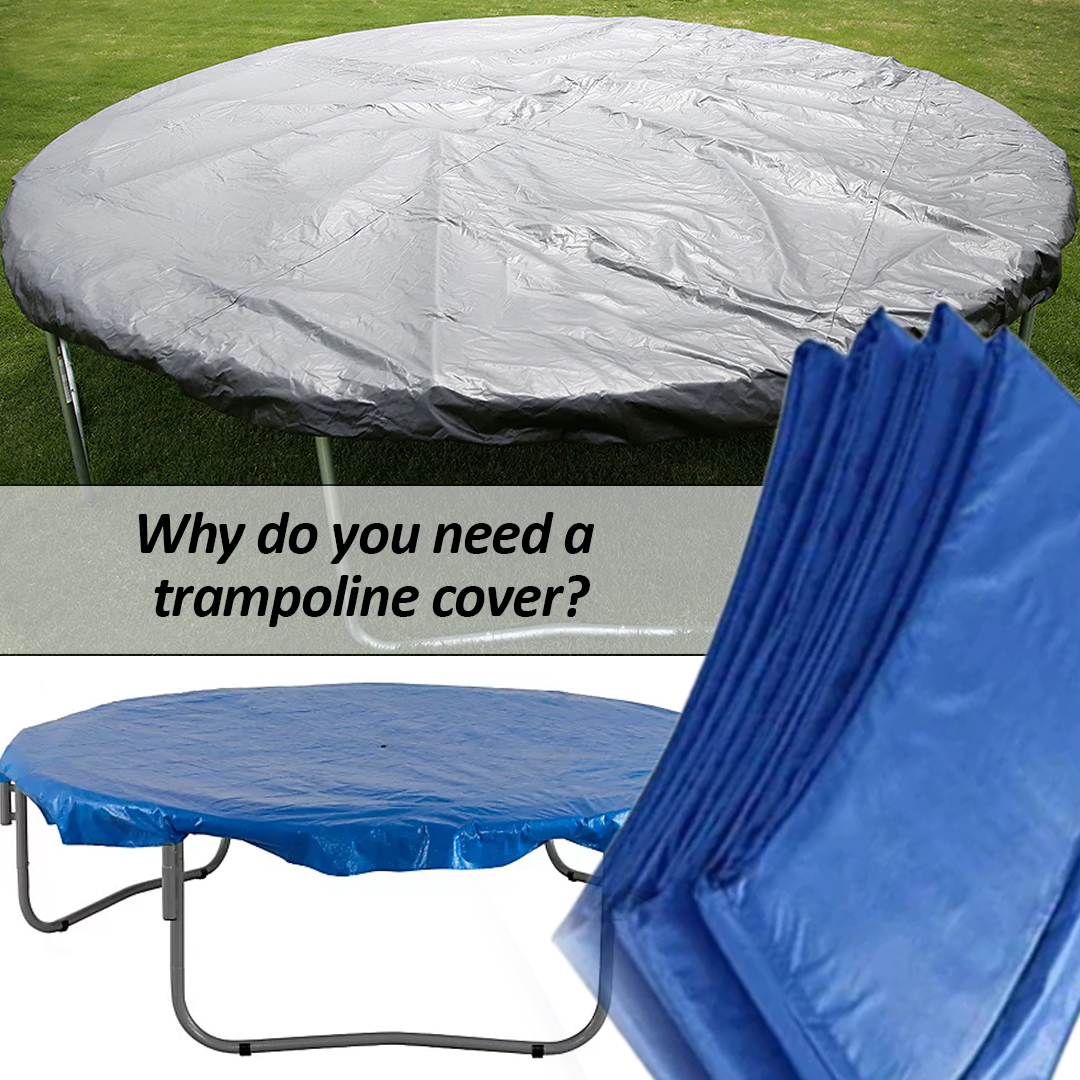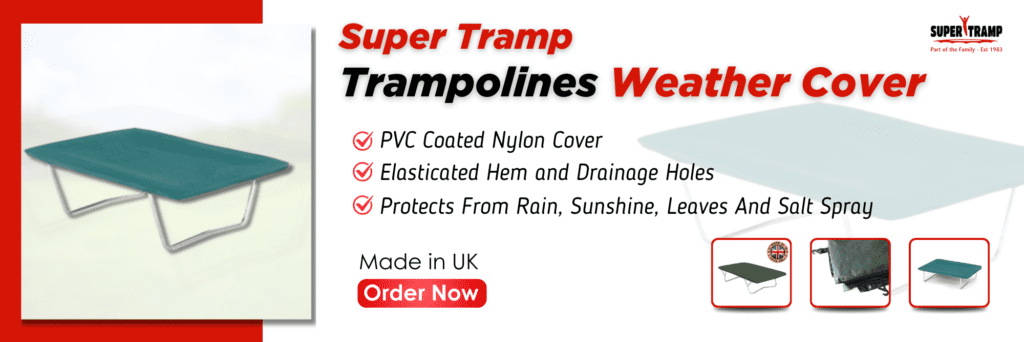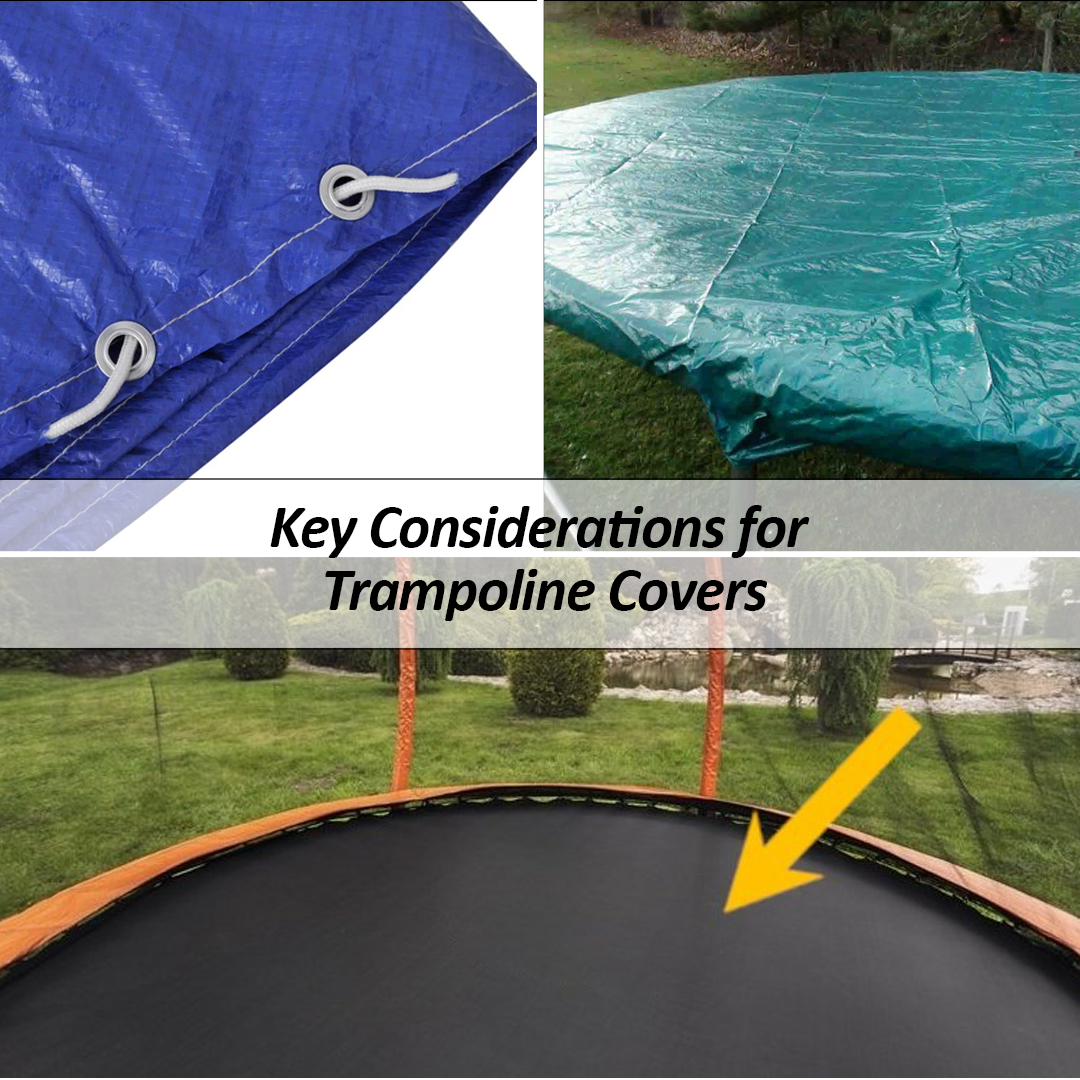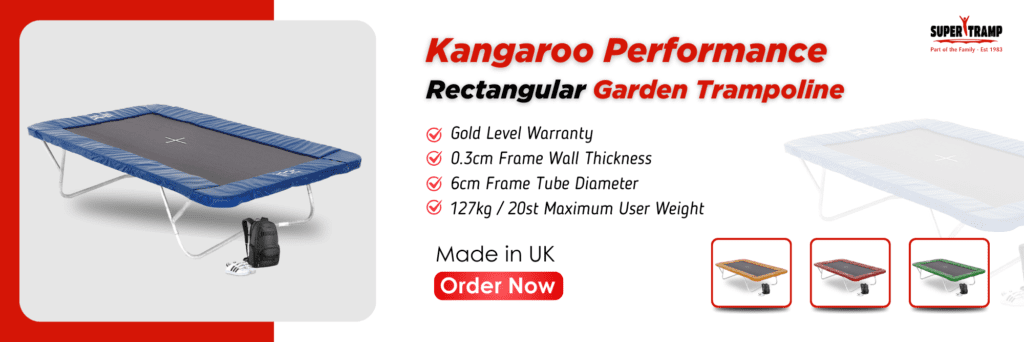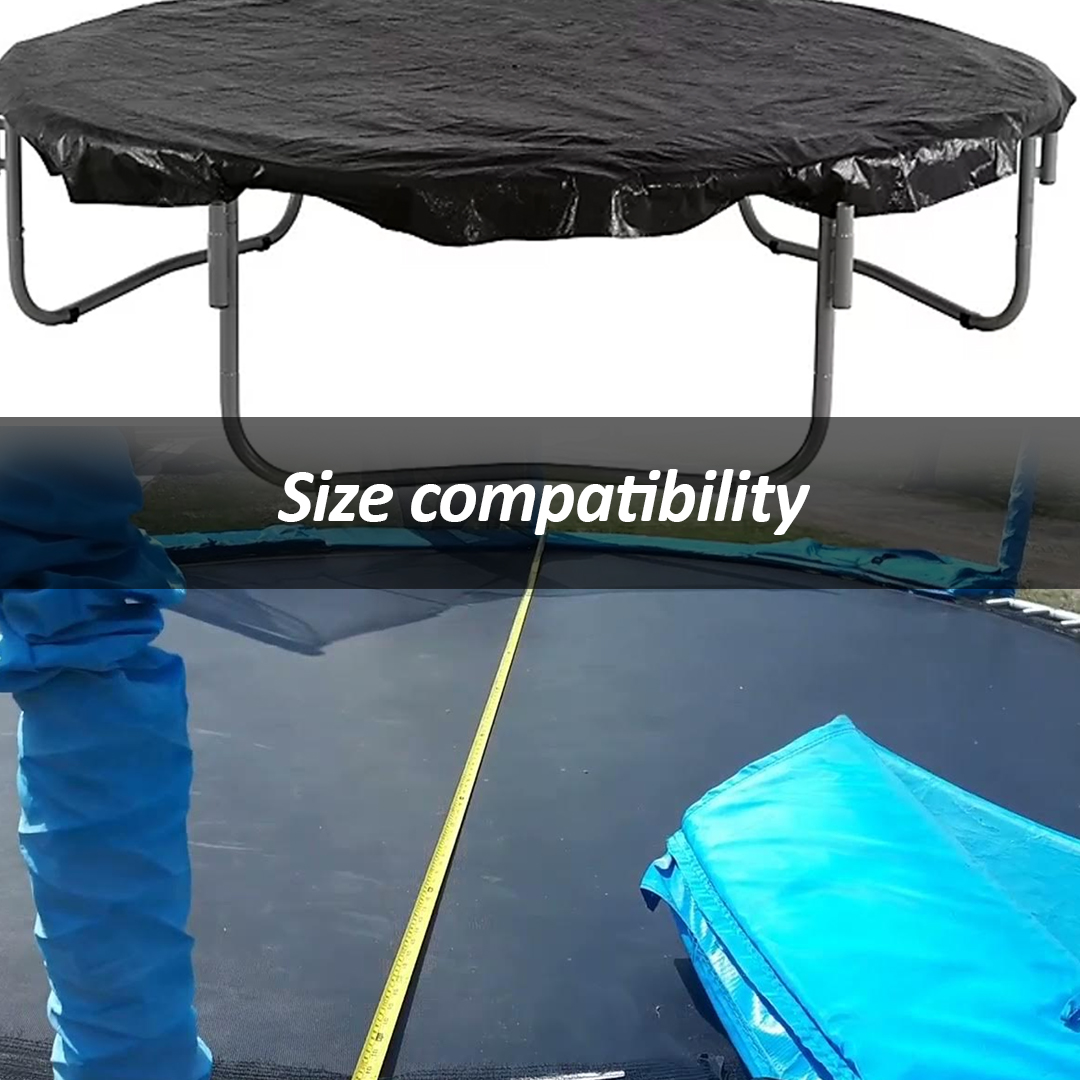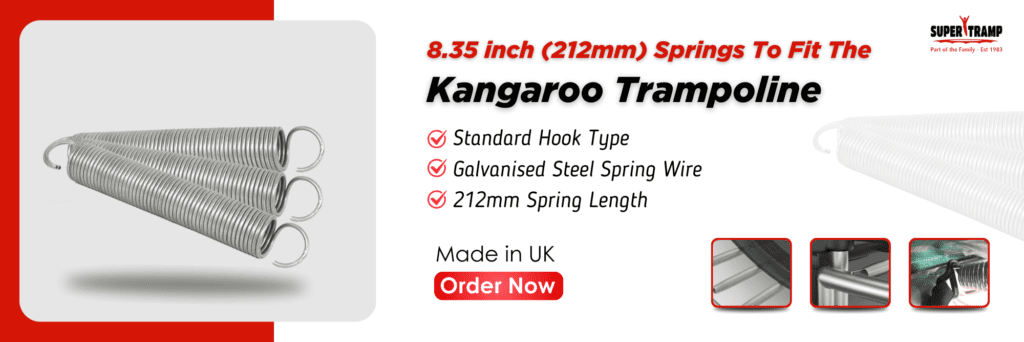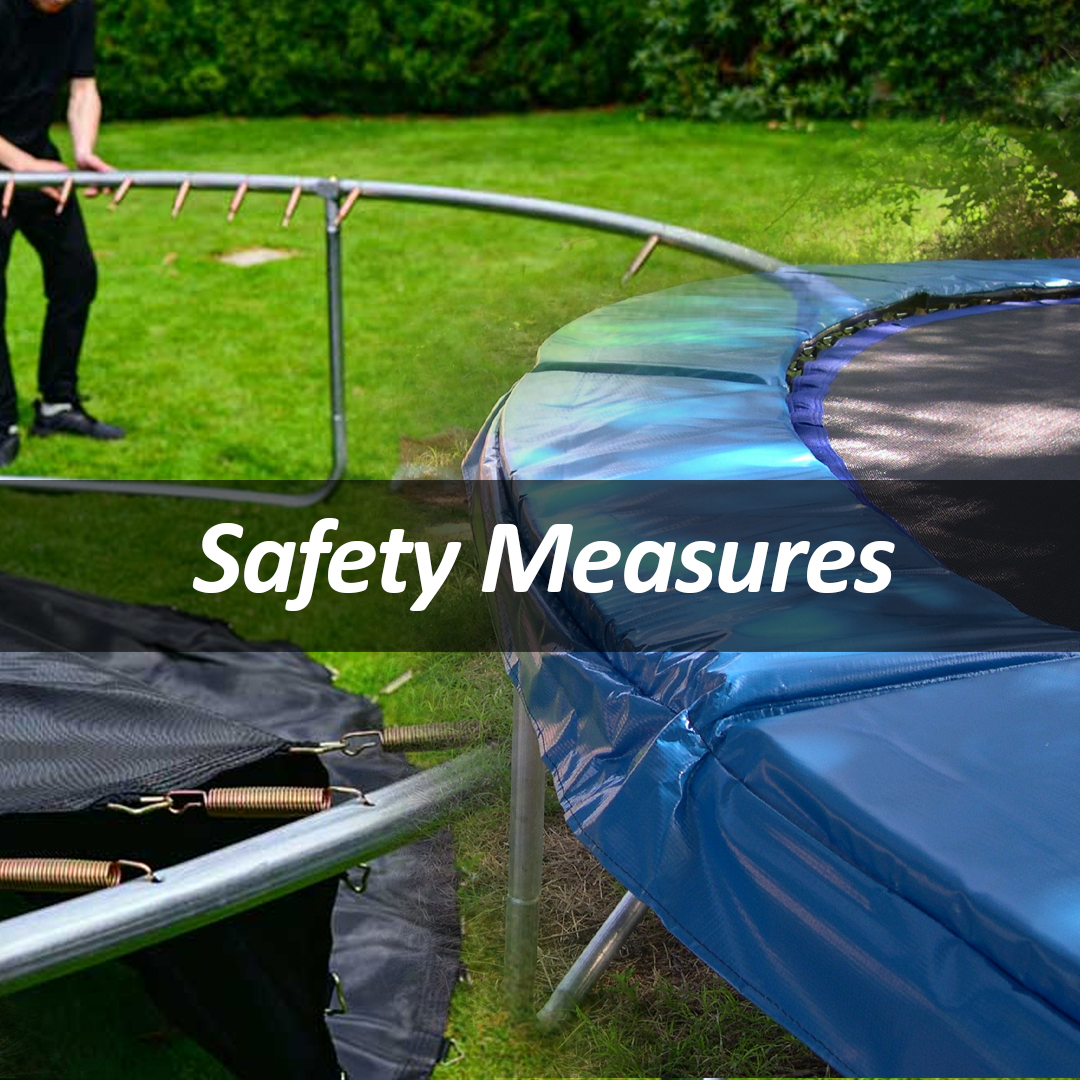You’ve invested in a garden trampoline to entertain the children (and perhaps yourself). Now, you’re considering safeguarding your investment in the unpredictable British weather. It’s a wise decision. Experienced trampoline owners recommend a sturdy cover to protect your trampoline from elements like rain, wind, and UV damage.
Table of Contents
ToggleA trampoline weather cover is essential for protecting your trampoline from the elements and extending its lifespan. Choosing a cover specifically designed for weather resistance is key in Britain’s climate. With the right trampoline cover, you can ensure many fun-filled summers of bouncing bliss. The problem is, with so many options out there, how do you choose? Don’t worry. We’ve got you covered, literally.
In this blog, we will explore essential tips for selecting the right trampoline cover to withstand British weather conditions.
Why do you need a trampoline cover?
A dependable trampoline cover is essential for protecting your trampoline from the challenging elements of rain, snow, and sun. The absence of a cover allows rain and snow to gather on the trampoline mat and pads, accelerating their deterioration. Moreover, the intense UV radiation from the sun can lead to the gradual fading and weakening of materials. By investing in a quality cover, you effectively shield your trampoline from these weather-related challenges, ensuring durability and preserving your investment.
The cover acts as a protective barrier, preventing rain and snow from causing rust and mould on the trampoline’s components. It also shields against the sun’s potent UV rays, mitigating the risk of fading and material weakening over time. Essentially, a trampoline cover is not merely an accessory but a vital element in the maintenance and longevity of your outdoor equipment. Make a wise decision to enhance the resilience of your trampoline against the unpredictable British weather by choosing a durable cover that will withstand the test of time.
Understanding British Weather
The UK is known for its variable weather, with rain, wind and changing temperatures common throughout the year. As a nation of gardeners and unique garden designs, we’re accustomed to making the most of the great British weather when we can! However, for those days when the weather takes a turn, it’s important to ensure expensive outdoor equipment like trampolines are properly protected.
Britain’s rainy and windy weather can quickly damage the mat, pads and springs without a suitable round weather cover. The rain causes rust and mould to form, the wind tears and frays the material, and the sun’s UV rays cause fading and cracking over time. A good quality, weather-resistant trampoline cover helps prevent all this by shielding it from the elements when it’s not used.
A thick cover with extra padding will help insulate and prepare the trampoline for winter. In summer, a lighter, breathable cover in a light colour will deflect the sun’s heat while allowing airflow. Whatever the season, a weather-appropriate trampoline cover is essential for any British garden!
Key Considerations for Trampoline Covers
Material
Look for a cover made of hardwearing, weather-resistant fabric like polyethene (PE) or polypropylene (PP). These synthetic materials are waterproof and long-lasting. Check that the cover has a high denier rating, like 600D or above, which indicates thickness and durability. A thicker cover will better withstand wind, rain and UV radiation.
Covers with aluminium coating or laminate provide excellent UV protection. Too much sun exposure can damage your trampoline mat, pads and springs. A UV-resistant cover helps prevent fading and premature wear.
Waterproofing
Consider a cover with polyurethane (PU) coating, which creates an impenetrable water barrier. Hydrostatic pressure resistance indicates how well a cover withstands pooling water—look for at least 5000 mm. Taped or heat-sealed seams also improve waterproofing.
A double-layer cover or one with extra waterproofing treatment for the rainiest months will keep your trampoline the driest. Vent flaps or breathable mesh panels prevent condensation build-up underneath.
Attachment
Elastic hem cords, straps and buckles securely fasten the cover to your trampoline frame. Wide straps with durable buckles around the cover’s perimeter hold up best to wind and provide the most coverage. Integrated straps that loop around the garden trampoline legs prevent the cover from blowing away or shifting in high winds.
Also, consider wind flaps or skirting extending over the trampoline mat’s edge. They provide extra protection from wind and rain getting underneath the cover.
Choosing a high-quality, weather-ready rectangular trampoline cover suited to Britain’s climate will give you peace of mind that your trampoline is shielded from the elements when not in use. The right cover keeps your trampoline safe and dry so you can bounce even after the rain has stopped.
Size Compatibility
When choosing a cover for your rectangle trampoline, ensuring the right size fit is key. A cover that’s too small won’t adequately protect your trampoline. At the same time, one that’s too big will flap around in the wind and potentially damage the springs or mat.
You’ll first need to determine your trampoline’s measurements to find the proper size. For round trampolines, measure the diameter across the outermost edge of the mat or springs. For rectangular or oval trampolines, measure both the width and length. Double-check the measurements, as even an inch off can affect the fit.
Once you have the exact dimensions, use the sizing chart provided by the cover manufacturer to determine which size will suit your needs. As a general rule:
- A cover 6-8 inches larger than your trampoline should fit snugly with minimal excess material. This is ideal for most situations.
- A cover 10-12 inches larger will still fit securely but with a bit more slack. It is recommended for a 12ft trampoline.This can make it easier to put on and remove, but it may flap more in high winds.
- A cover over 12 inches larger is not recommended and will not adequately protect your trampoline.
For added protection from the elements, consider a cover specifically designed for winter use or harsh weather conditions. These are typically made of heavier, more durable material that can withstand strong winds, heavy rain, and snow. An all-season cover can also work well for most of the year in rainy climates.
Ultimately, taking accurate measurements and choosing a cover sized explicitly for your trampoline model will ensure the best fit and performance. Your trampoline will thank you for the extra care and protection from Britain’s rainy conditions!
Secure fastening mechanisms
Elastic straps
Elastic straps that attach to metal rings or grommets around the edge of the cover are a popular option. They provide flexibility and ‘give’ so your cover remains securely fastened even in strong gusts. Look for straps placed every 3 to 4 feet around the perimeter for maximum hold. Choose a cover with straps attached at multiple points, like at the edge and over the springs, for the best protection.
Buckles
Plastic buckles or clips are another mechanism for fastening your performance trampoline cover. Buckles provide a tight, rigid fastening to keep out drafts. However, they can be as tricky as the trampoline tricks, to secure and undo, especially when fingers get stiff in cold weather. With repeated use and exposure to the elements, buckles may also weaken or break over time. For safety, check buckles regularly and replace any damaged or difficult to fasten.
Drawstrings
Drawstrings, also known as pull strings or cinch cords, tighten your cover by pulling the string to gather the edge. Drawstrings must be tied off securely to provide wind protection. Be very careful not to leave long, loose ends that could pose a tripping hazard or get tangled. Drawstrings may need to be retired or cinched periodically to maintain a tight cover, requiring frequent monitoring.
Combining these fastening mechanisms, like elastic straps with buckle or drawstring backups, will ensure your trampoline cover stays safely secured no matter what weather comes your way. And, of course, permanently remove or tie down your cover when your trampoline is in use to avoid any safety issues. Choosing a high-quality, weather-resistant cover and inspecting it regularly for any damage will help protect your trampoline for years.
Safety Measures
Secure attachment points
Choose a cover with multiple attachment points, like elastic straps, buckles and clips, or rope ties, spaced evenly around the edge to securely fasten it. Straps or ropes should have adjustable tension to account for different weather conditions. Make sure any metal parts like buckles are made of corrosion-resistant materials that won’t rust over time.
Proper installation
Once you have a high-quality, safety-focused cover, install it correctly. Attach the cover when the trampoline is completely dry to prevent moisture buildup. Secure all straps, ropes and buckles firmly and evenly so the cover fits snugly over the trampoline. Check attachments regularly, especially after storms, to ensure the cover remains securely installed. Remove any debris from the cover top to prevent punctures before each use.
Safe use
Only allow one jumper at a time on the trampoline to avoid overloading the cover. Do routine inspections of the cover, pads and netting for any signs of wear or damage before each use. Remove the cover entirely in warmer, drier weather to prevent overheating and allow the trampoline frame pads and mat proper ventilation.
Warranty and Customer Support
Look for a cover with at least a 1- to 2-year warranty against defects in materials or workmanship. Since covers will be exposed to the elements, a longer 3- to 5-year warranty is even better. Check what exactly the warranty covers. Does it include damage from weather exposure or just manufacturing flaws? A more comprehensive warranty will give you peace of mind if any issues arise.
Look for a company that provides helpful customer service and support for their trampoline covers. Things like live chat, email, and phone support during business hours are good signs. See what other customers say about their experience with the company’s customer service.
Conclusion
In summary, choosing the right trampoline cover for the ever-changing British weather is crucial. Opt for a high-quality cover with features like UV protection and good waterproofing. Ensure it fits snugly with secure fastening mechanisms like elastic straps or buckles. Follow safety guidelines, limit the number of jumpers, and check regularly for wear and tear. Consider a cover with a warranty and reliable customer support for added peace of mind. This ensures your trampoline stays safe and ready for fun, whatever the British weather brings.
FAQ's
How do you protect a trampoline from the weather?
To safeguard a trampoline, invest in a weather-resistant cover. Covering it during non-use shields against rain, sun, and debris, extending its lifespan. Additionally, regular maintenance, like checking for rust and securing loose components, enhances durability.
Is it worth getting a trampoline cover?
Yes, it’s worthwhile to invest in a trampoline cover. A cover provides essential protection against the elements, preventing rust, sun damage, and debris accumulation. It prolongs the trampoline’s life, ensuring a safer and more durable outdoor play experience.
Can you leave your trampoline out in the rain?
While trampolines are designed to withstand some weather exposure, leaving them out in constant rain may lead to wear and rust. Using a trampoline cover is advisable to protect it from rain, ensuring longevity and safety.
Is cold weather bad for trampoline?
Cold weather alone isn’t inherently harmful to a trampoline. However, extreme cold combined with moisture can lead to rust. Applying a weather-resistant cover during winter and regular maintenance can mitigate potential issues in colder climates.
How do you secure a trampoline cover?
Secure a trampoline cover by using bungee cords or straps. Wrap them around the trampoline frame, threading through the cover’s eyelets. Tighten securely to prevent wind from lifting the cover. Regularly check and adjust the straps for effective protection.

